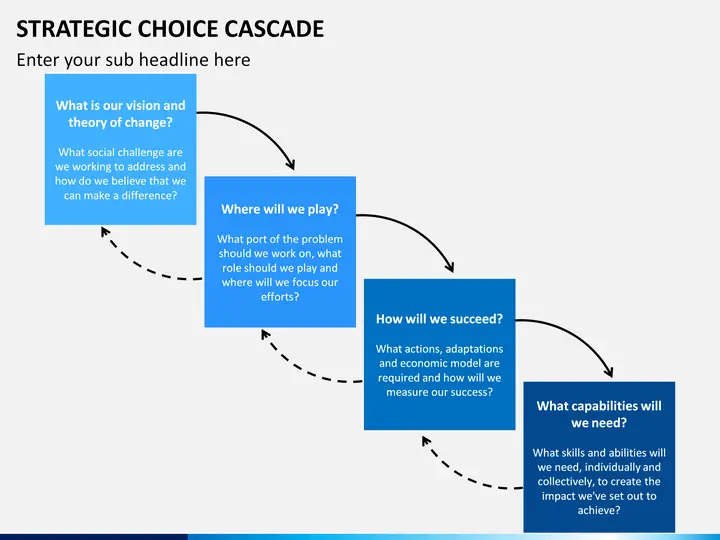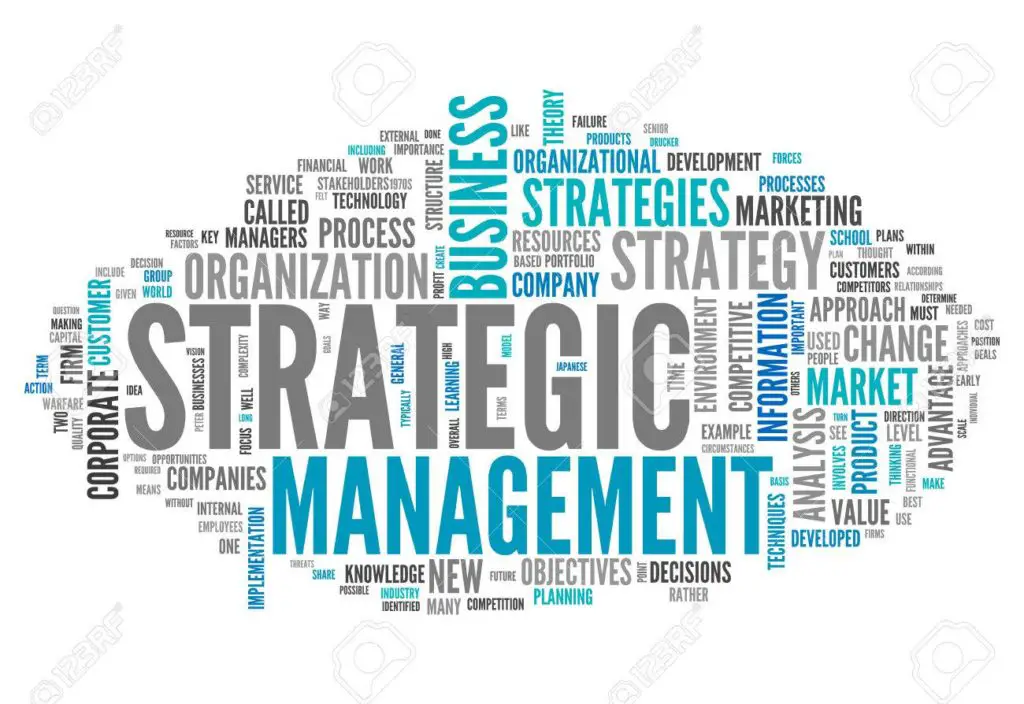This article deals with strategic choice. This implies that there are many alternating or array of strategies from which the organisation can chose based on the outcome of the organisation’s environmental analysis. In making strategic choice, the manager must take cognizance of certain factors like structure and the culture of the organisation. Strategic choice basically comprises strategy generation, strategy evaluation and selection. The techniques of doing these are presented in the article.

Table of Contents
Choice of Elements of Strategic Management
After a critical analysis of both the internal and external environment of the organisation, the management needs to generate a number of strategic possibilities. Thus, there is a need for techniques that will assist in the evaluation of the available options and choices. Thus, essentially the choice element of the strategic management is concerned with choosing a strategy based on the results of the foundations laid by the strategic analysis.
Any good manager must be able to generate and evaluate possible strategies taking cognisance of the nature of his/her own organisation or industry. The manager must seriously consider the risk, structure and culture of the organisation before making a straight choice. In this article, we shall discuss the techniques of generating, evaluating and selecting strategic options. The elements that are usually associated with making strategic choices are shown in the following Figure.

Basically, strategic choice has three aspects:
(i) The generation of strategic options which go beyond the most obvious courses of action identifying the options.
(ii) The evaluation of strategic options which may be based on exploiting an organisation’s relative”s strengths or on overcoming its weakness.
(iii) The selection of a preferred strategy which will enable the organisation to seize opportunities within its environment or to counter threats from competitors.
Generation of Strategic Options
Generation of strategy options involves identifying as many as possible potential courses of action. In reality, to find all possible courses of action may not be feasible but the fact is that only the very obvious ones are spotted or identified.
Evaluation of Strategic Options
The evaluation of strategic options is done within the frame-work produced by strategic analysis. The various alternatives listed as strategic options have to be tested for strategic fit (suitability), feasibility and acceptability, which are the three major evaluation criteria.
Selection of Strategic Options
Usually, the selection of strategic options results in a single strategy or a set of strategies that can be used in the strategy implementation process. The major factors that normally influence strategy selection process are the culture and the power structure of the organisation.
Strategy Formulation
Strategy Formulation is an element in strategy choice process which has the aim of generating adequate flow of strategic options for subsequent evaluation. There are many ways of doing this. Johnson and Scholes (1993) suggest identification, what basis “which direction and how options”.
Basic Alternative Competitive Strategies
Porter classifies three possible ways for an organisation to outperform its competitive rivals based on five competitive forces acting on an organisation. This is later reduced to four. He says that the choice is between three generic business strategies, which are low cost, differentiation, focus/niche. The generic strategies are in two parts: (a) Product differentiation and (b) overall leadership. The focus/niche aspect of the strategy concerns a distinct segment. This aspect is further sub-divided by Porter to low cost, focus/niche and differentiation focus/ niche to give the four generic strategies.
In spite of its criticism, the notion of generic strategies is pragmatically useful as a device to force explicit consideration of the way of competing by showing the alternatives as by lowest cost (giving strength from strong loyalties) and where competing showing the alternatives as everywhere or in a segment. This model’s limitation is the complexity of the reality on ground and in many instances the effective management is to create some mixture of the strategies.
The Direction
There are many strategic directions which an organisation can focus. These different directions have been put together and modelled by Ansoff (1968). Seven alternative directions have been indicated. The seventh alternative, with its diversification, is divided further into two sub-options, i.e. related and unrelated business areas.
Summary of Strategic Options
|
|
Internal |
Acquisitions |
Joint |
|
1 Do nothing |
– |
– |
– |
|
2 Withdrawal |
Liquidate |
Complete sell out partial divestment management buy out. |
Licensing subcontracting |
|
3 Consolidation Growth with market increase: – quality – productivity – marketing Capacity Reduction/rationing |
Buy and shut down |
– Technology transfer subcontracting | |
|
4 Market penetration |
Increase: – quality – productivity – marketing |
– Buy market share industry rationalisation |
Collaborations |
|
5 Product development |
Research and Development modifications Extensions |
Buy-one products |
Licensing, franchising, consortia, lease facilities |
|
6 Market development |
Extend sales area Export new segments New uses |
Buy competitors |
New agents licensing consortia |
|
7 Background integration Forward integration Unrelated diversification |
Switch focus new units Minority Create subsidiaries holdings buy subsidiaries |
– Technology – Exclusive – Franchising | |
|
Source: Scholes (1993) | |||
The summary of the strategic options indicating the various directions on organisation can focus is presented in figure 6.2 each of these options are hereby discussed.
Do Nothing
This means that the organisation will have to continue in the present direction, i.e. maintain the status quo. As a long-term measure, it may not be beneficial but as a short-term, it may be appropriate. Some growth may occur if the current market grows. Otherwise everything remains constant or the same.
Withdrawal
Under this situation, the organisation is removed from the industry because of an irreversible decline in demand, changes or opportunity cost which indicates that other business ventures offer more appropriate strategic directions. It is more of a strategy for asset realisation and resource deployment.
Consolidation
Strictly speaking, it is a strategy adopted to maintain the existing market share. It is done when a dominant organisation aims at stability in order to accumulate cash reserves for some future activities. This can be achieved by cutting costs or increasing prices with the aim of obtaining a better margin.
Retirement
It is different from consolidation when its main aim is to obtain a reduction in the scale of operations.
Market Penetrations
Using this strategy, the organisation seeks to increase market share, i.e. sales growth within the same market for the present product(s) or services through greater marketing efforts in which the market shares of others can be grabbed. It includes increasing the number of sales persons, advertising expenditure, extensive sales promotions or publicity effort. It is regarded as the most conservative of growth strategies since it builds on the strength of the organisation and requires no easy during the growth phase. It may meet fierce opposition if the market is static or declining.
Product Development
This strategy seeks increase by increasing or modifying present products or services. The strategy keeps the organisation operating with current markets but competing on the basis of new product. So, growth is achieved if the new products are successful. Product development usually entails large expenditures. It is a relatively low-risk strategy and one that works well when products life cycles are short and products are the natural spin-off from research and development process.
Market Development
This involves introducing present products or services into new geographical areas or new markets. It is a relatively high risk strategy given the state of ignorance of the new market. When growth is sought and existing markets have little scope, this direction is taken into new areas, new market segments or new market uses. It is least risky when the organizations competence is product-related rather than market-related.
In Zambia today, many domestic firms are striving hard to carry their products abroad. It is, however, to be noted that expansion into the world market is no guarantee for success. It is important to allow greater care in quality control and customer service.
Diversification
This strategy takes the organisations away from both the existing markets and existing products. This has the highest risk of all strategies because of unfamiliarity. But related diversification remains broadly within this same industry, either backward into the supply chain, forward into the distribution chain or horizontal into complementary activities and so lowers the risk. However, unrelated diversification is a popular strategy among the holding company conglomerates.
The strategy is becoming less popular since business organisations are finding it difficult to manage diverse business activities. Firms are advised to “stick to the knitting” and not to stray away too far from the firm”s area of competence. Nevertheless, diversification is still an appropriate and successful strategy. Sometimes for a company like Philip Morris, diversification makes sense because cigarette consumption is declining, product liability suits are a risk and some investors reject tobacco stock on principle.
It is possible to implement growth strategies by means of internal organic development of growth over time. However, this is slow.
Growth can also be by external development via mergers and acquisitions. This may be expensive but is fast gaining access to marketers through joint ventures. The organisation will have to consider the trade-off between cost/risk/speed and shape the choice between these alternatives.
Other Strategic choice Options
Broad strategy alternatives and other strategic options may be considered besides those earlier mentioned. They include growth, stability and retrenchment. The growth strategies reproduce development, diversification, market development or market penetration strategies. The stability strategies are doing nothing (also referred to as holding) and consolidation (or harvesting) strategies. The retrenchment strategies can, in turn, be considered according to Robson (1997) in three subdivisions.
Liquidation
This involves selling all the company”s assets in part for their tangible worth. Liquidation is the recognition of defeat and could be an emotional and difficult strategy. However, it may be better to lease operation than to continue to lose large sums of money. It could also be a redeployment of resources to somewhere else.
Divestment
It involves selling a division or part of an organisation. It could be part of an overall retrenchment exercise, to reed an organisation of businesses that are unprofitable, that require too much capital or that may not fit well into the organisation”s other activities. Divestment can also be adopted when the organisation perceives threats in the environment such that the division can no longer be effective. The strategy is often associated with returning to the core business by shedding peripheral activities.
Turnaround
This strategy is used to recover from forced liquidation of business or bankruptcy. It is the most complex strategy to pursue since turning a non-profitable business into a profitable one will be beyond management skills of the organisation. It may be a strategy resulting from new management or owning groups.
Strategy Thrusts
Other authorities (Rackff et al, 1985) have expanded on Porter”s work on competitive strategies and offered a more comprehensive model of industry competition. They suggest that strategic thrusts are the major moves or actions that an organisation takes, which may be offensive or defensive in nature. The strategic thrusts model suggests that all possible activities can be summed up in the words of Robson (1997) as follows:
Differentiation
This aims to get an advantage by distinguishing products and services from competitor or by reducing the differentiation advantage of rivals.
Cost
This aims at getting an advantage by reducing own suppliers” or customers” costs by raising the costs of rivals.
Innovation
This is aimed at getting an advantage by introducing a product change that fundamentally changes the industry”s method of business.
Growth
This aims to get an advantage by volume or geographic expansion, backward or forward integration, product line or entry diversification.
Alliance
This is diverted at getting an advantage by forging marketing agreements, forming joint ventures or making acquisitions related to the other four thrusts.
These strategies can be applied to three possible targets or categories, which are:
- Supplier Targets: those providing the organisation with materials, capital, labour, services, etc.
- Customer Targets: those requiring the organisation” s products
or services, either for their own use or for subsequent re-sale.
- Competitor Target: those selling or potentially selling products seen by customers to be the same as, or tolerable substitutes for, those produced by the organisation.
This model, as indicated, permits the analysis of the three strategic targets of the organisation”s industry and makes the manager aware of the main actions the organisation can take in the quest for competitive gain. So, with this kind of model, the organisation should always know its strategic target, whether it is the suppliers, customers or competitors.
The organisation should also know the kind of strategic thrust to be used against the target, be it differentiation, cost innovation or growth of alliance. The strategic model should also be known, whether it will be offensive or defensive and the direction of thrust to be used, be it usages or provision. These strategies have to be properly considered before the choice of a strategic option. Often times, it is better to use a combination of strategies to achieve desired goals.
CONCLUSION
This article deals with the three elements of strategic choice and the mode. It is clear that there are certain factors to be considered before making a strategic choice. The factors are strategy generation, evaluation and strategy selection. There are usually alternative competitive strategies. One of them is chosen based on critical and proper evaluation of these alternatives as well as the focus of the organisation.



